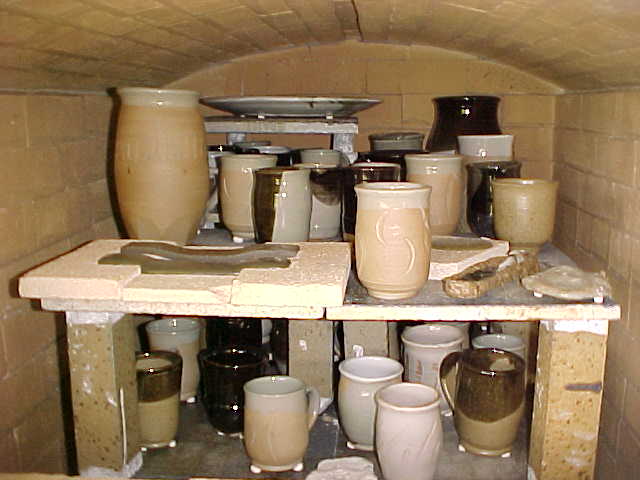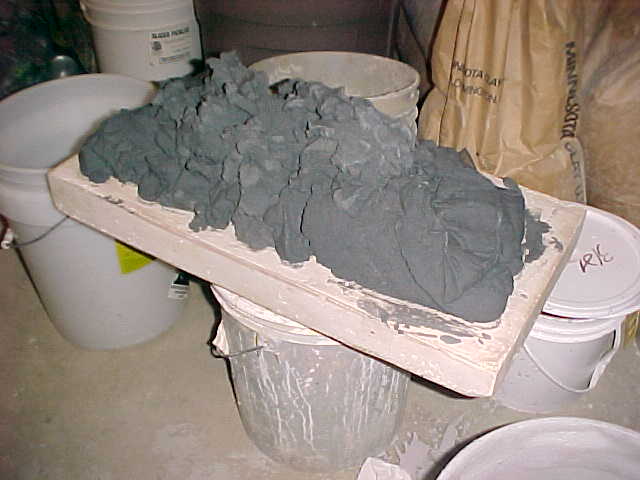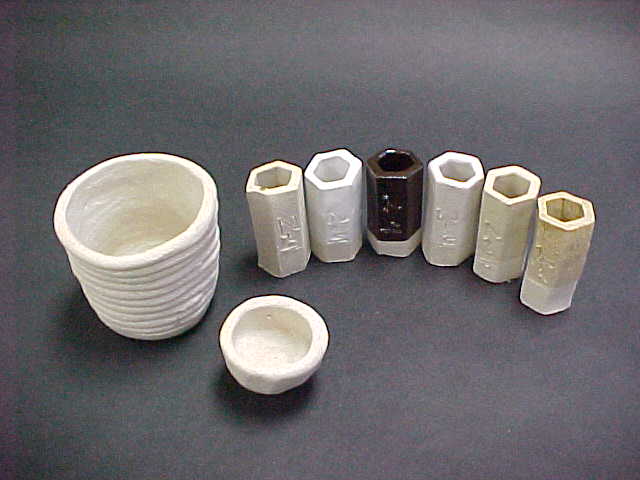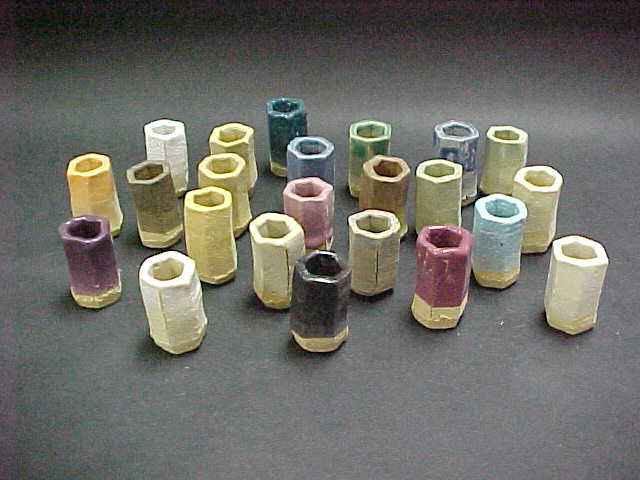 |

|
| The glazes used at the pottery will be a combination of common glaze recipies that are found in ceramic resourse books. Some examples include Leach White, Temmoku, Babu celadon, Egg shell white and some others. In concert with the glazes there will be slips that work together with the fly ash in the kiln to create their own unique affects. There are also intentions to develop a pallete of glazes and decorating slips/oxides acquired from local resources. The ultimate goal of this pottery is to be a fully indigenous studio, making use of local clays and glazing/decorating materials. Why bother??? First, the idea of developing a unique and local product has been very appealing to this potter. Second, there is the idea that less overhead cost means a better return for the business. However, as the saying goes, "Spend time, save money." There is a serious time investment made to accomodate this approach to the creative process. Third, there is a theraputic quality to working in this manner. The greater personal investment in the preparation of the materials adds to the satisfaction found in the end result, for the maker and end user. |
 |
 |
 |
 |
| View of the Wood-fired Kiln and the color pallette of the First-firing. |
| Clay Recipe 2-4, fired to Cone 10 (2345*F) with 5 common studio glazes. Small hex-cylinders represent colors in oxidation: raw, Leach White, Tenmoku, Shino-Type, Babu Celadon and Sraw Tan. |
| Indigenous clay, simply put through a 60/in. mesh screen and fired to Cone 6 (2291*F) with commercial glazes. Upon closer inspection you would notice that about a third of the glazes are so dramatically absorbed by the clay that they hardly even look glazed. Others required up to three coats of glaze in order to communicate their intended color. Glazes with higher clay content were consistently more effective. |
| This is a portion of Sunflower Seed Ash that has been screened and will be used, in combination with glaze clay and Custer Feldspar, to develop a natural ash glaze. |
| The Glazes |
| Babu Celedon ^9-10 Custer Feldspar 4000gm Flint 3000gm Whiting 2000gm EPK 1000gm Tin Oxide 200gm Yellow Ochre 100gm Bentonite OR 200gm Glaze Clay 10500gm |
| Leach White ^9-10 Custer Feldspar 3375gm Nepheline Syen. 1125gm Whiting 1800gm Flint 2700gm Bentonite 180gm Zircopax 900gm 10080gm |
| Shino Type ^9-10 Soda Ash 335gm Kona F-4 Feldspar 1466gm Nepheline Syen. 5026gm Spodumene 1257gm Ball Clay 1624gm EPK 292gm 10000gm |
| Tenmoku (Good Black) ^9-10 Custer Feldspar 3003gm Flint 3640gm Whiting 1547gm EPK 910gm Iron Oxide 1001gm 10101gm |
| Copper Red ^9-10 Silicone Carbide 35gm Frit #3134 425gm Potash Feldspar 6400gm Frit #624 100gm Whiting 250gm Zinc Oxide 137.5gm Bentonite 250gm Flint 2250gm Tin Oxide 125gm Copper Carbonate 70gm 10042.5gm |
| Reitz Rutile ^9-10 Nepheline Syen. 7000gm Whiting 500gm Gerstley Borate 200gm Petalite 1500gm Kaolin (EPK) 800gm Rutile 800gm 10080gm |